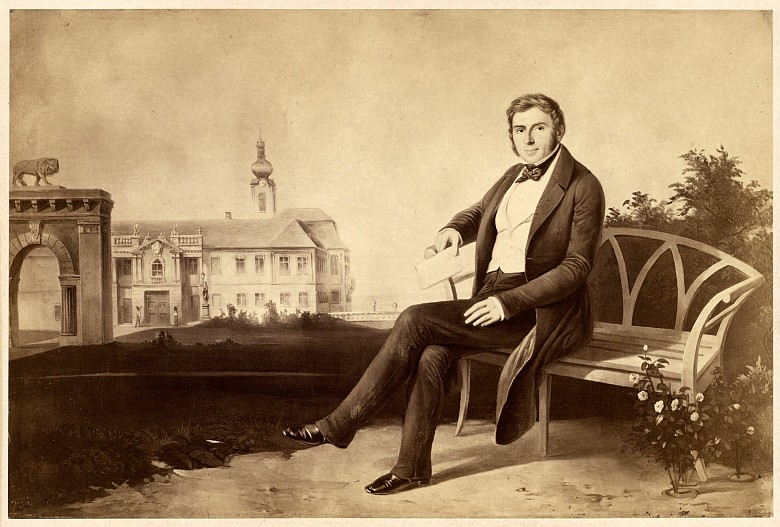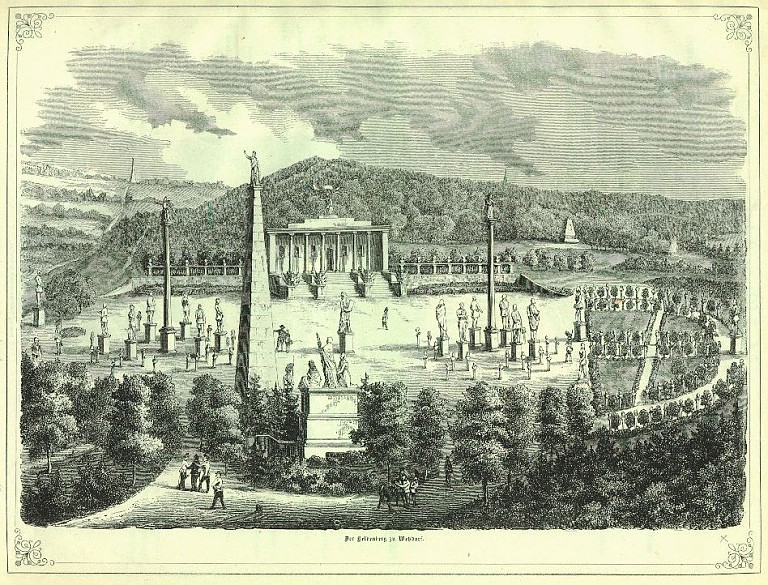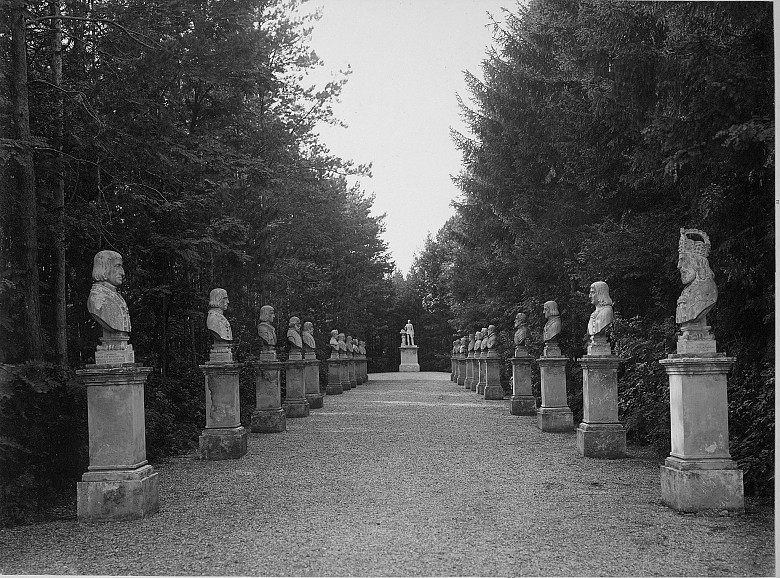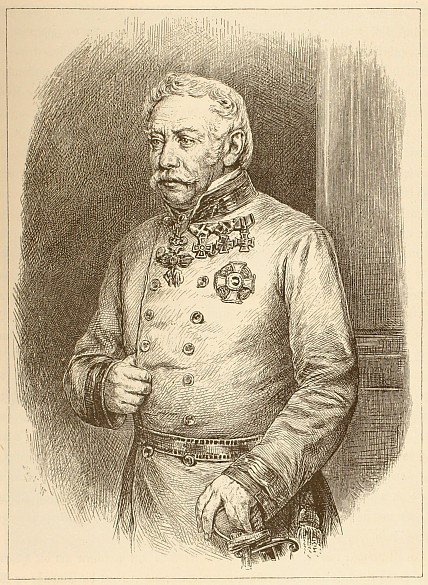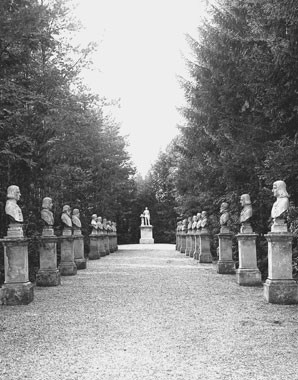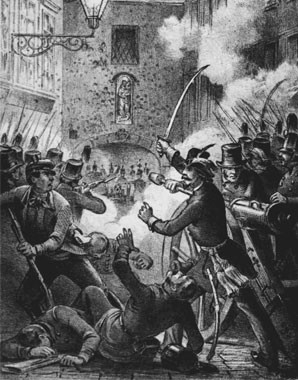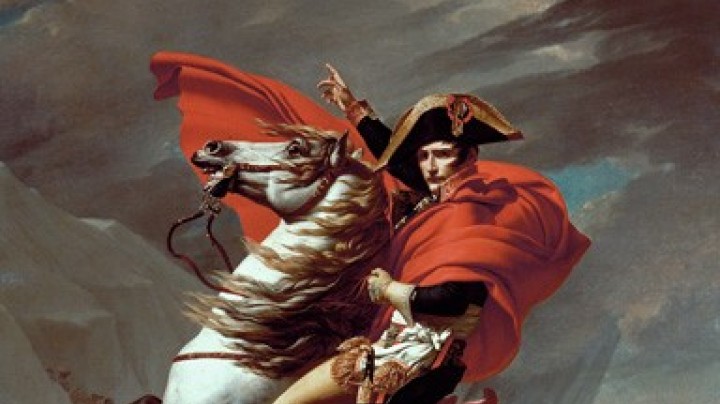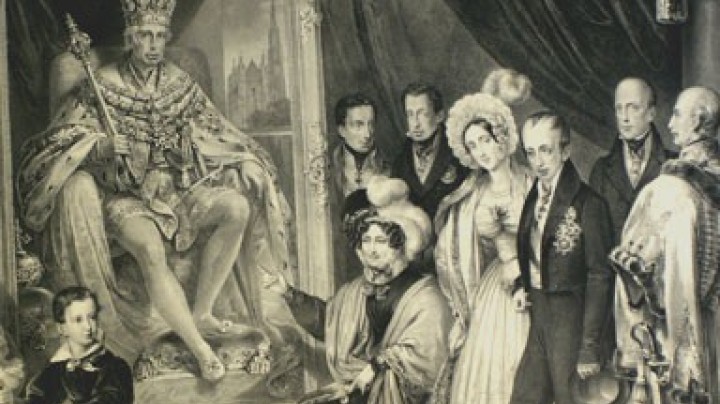The Heldenberg: a monument to patriotism
What was often celebrated in grandiloquent speeches to whip up patriotic fervour is here ‘hewn in stone and cast in iron’: with triumphal arches, victory columns, trophies and life-size statues a shoe manufacturer celebrated the glory of the Imperial-Royal Army.
went a popular saying of the time in reaction to the macabre pathos of the Heldenberg.Here rest three heroes in blessed peace; two delivered battle, the third delivered the shoes!
Inscription at the entrance to the parkThis house is dedicated to the worthy sons of the Fatherland for the steadfast loyalty and heroic courage demonstrated in the years 1848 & 1849.
The creator of the Heldenberg (lit.: 'Heroes' Mount') monument, Joseph Gottfried Pargfrieder, was a self-made man of the Biedermeier age in all its ambivalence. On the one hand he was seen as an industrial pioneer who supplied the army with footwear, but was also accused of being a corrupt war profiteer and arms smuggler. He was immensely wealthy and had the very best connections in society, extending credit on generous terms to influential individuals. Pargfrieder was regarded as an eccentric crank and made a great mystery of his origins, spreading the rumour that he was the illegitimate son of Emperor Joseph II and enjoyed protection at the highest level…
In 1849, as a demonstration of his loyalty to the imperial dynasty, he started laying out a park at his country estate at Kleinwetzdorf in Lower Austria with the purpose of glorifying the role of the Imperial-Royal Army during the suppression of the 1848 revolution and the restoration of absolute Habsburg power.
At the centre of this complex rises an obelisk forming the entrance to a subterranean mausoleum. There, watched over by four life-size knights in armour, rest the mortal remains of two nineteenth-century generals: the less-well-known Baron Maximilian Wimpffen, Chief-of-Staff at the Battle of Aspern, together with Field Marshal Count Joseph Wenzel von Radetzky, a far more famous figure, not least thanks to the march named after him by the elder Johann Strauss.
Radetzky was a legend in his own lifetime: having joined the army in 1784, he distinguished himself in the Napoleonic wars and was a member of the general staff in the Battle of Nations at Leipzig. Highly decorated and styled the Father of the Austrian Army, at the age of 82 he commanded the troops that crushed the revolution in Milan in 1848. He did not apply for retirement until 1857, at the age of 91, and died the following year. Franz Joseph had originally planned to have Radetzky buried in the Imperial Crypt, the traditional Habsburg place of entombment, as a sign of his close association with the dynasty, but Radetzky had already willed his remains to Pargfrieder, who in return pledged to take on the huge debts incurred by the field marshal.
Pargfrieder eventually had himself interred between the tombs of the two generals in a separate vault, where his embalmed corpse, dressed in knight’s armour and seated in an upright position, keeps guard eternally as it were, watching over the glory of the House of Habsburg …
